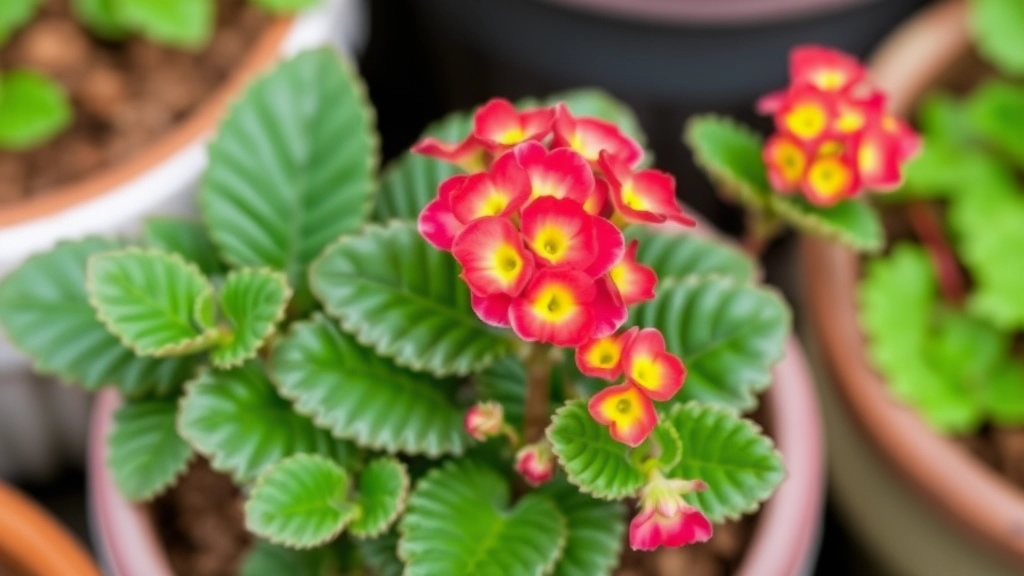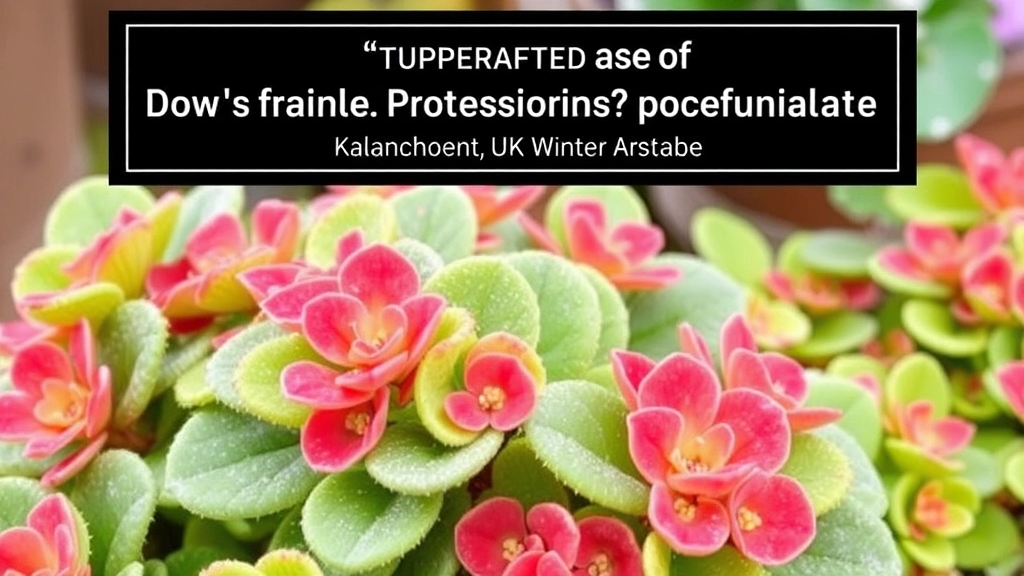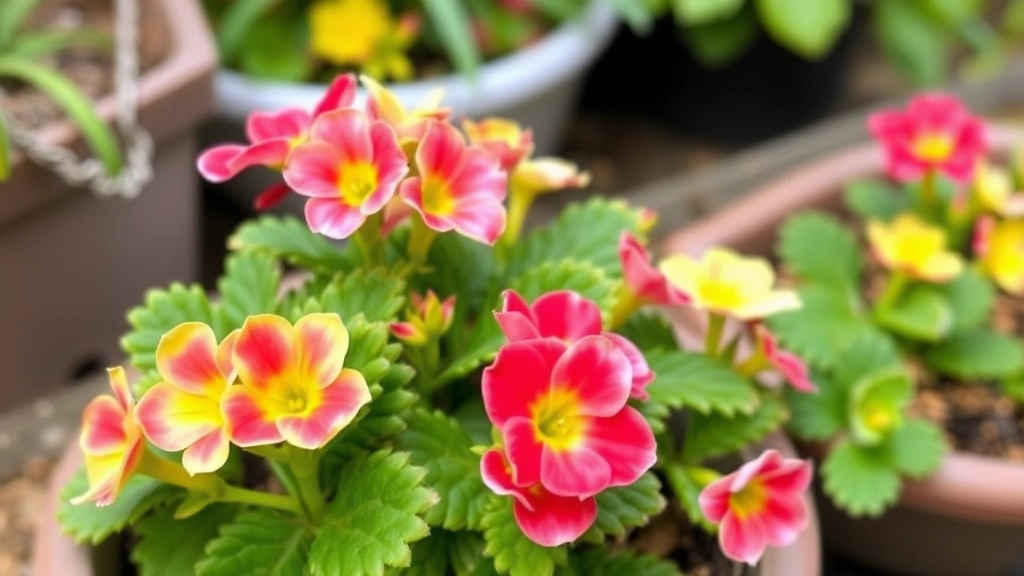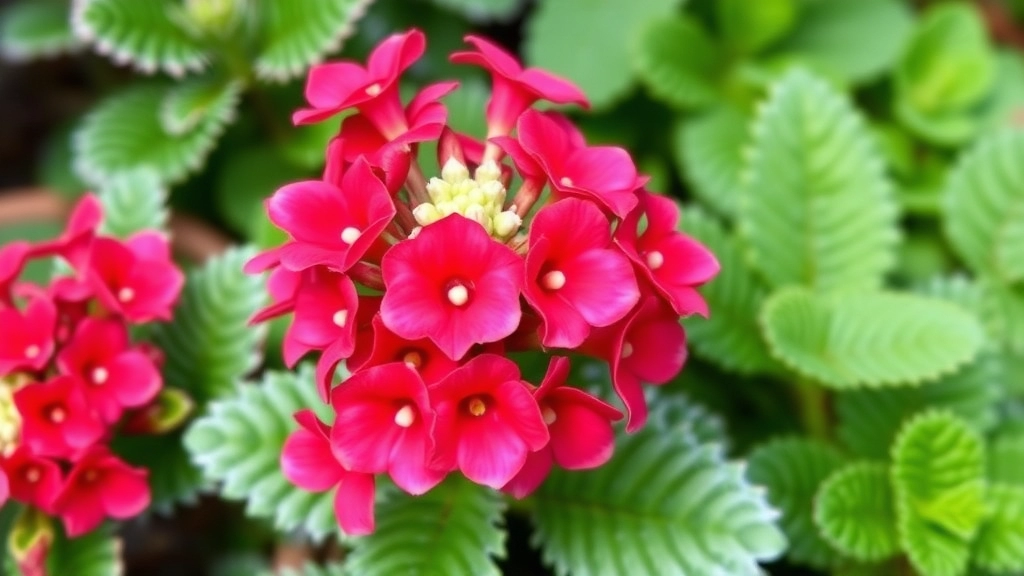Can You Plant Kalanchoe Outside in the UK?
Wondering if you can plant kalanchoe outside in the UK? You’re not alone. Many gardeners are curious about whether this vibrant succulent can thrive outdoors given the UK’s unpredictable weather. The good news is that kalanchoe can indeed be placed outside during the summer months. However, once the temperature dips below 50°F (10°C), it’s crucial to bring them indoors to avoid frost damage.
Optimal Conditions for Kalanchoe
Kalanchoe thrives best in temperatures between 60°F and 82°F (15°C to 27°C). In warmer regions of the UK, they might survive in the ground, but most gardeners prefer planting them in pots. This makes it easier to transfer them indoors when the colder weather sets in.
Tips for Outdoor Kalanchoe Care
- Keep an eye on the weather.
- Be prepared to move them inside when necessary.
Best Time to Place Kalanchoe Outdoors in the UK
Are you wondering when the best time is to move your Kalanchoe outdoors in the UK?
Timing is crucial for ensuring your Kalanchoe thrives in its new environment.
The ideal period to transition your Kalanchoe outdoors typically falls between late spring and early summer, specifically from May to early June.
During this time, the risk of frost has significantly diminished, allowing the plant to acclimatize to its outdoor surroundings.
Key Considerations:
- Frost-Free Period: Ensure that nighttime temperatures consistently stay above 5°C (41°F).
- Sunlight Exposure: Kalanchoes thrive in bright, indirect sunlight. Gradually introduce them to direct sunlight to avoid leaf scorch.
- Acclimatization: Start by placing your Kalanchoe outside for a few hours each day, gradually increasing the duration over a week or two.
By carefully timing the outdoor placement of your Kalanchoe, you set the stage for healthy growth and vibrant blooms. For more detailed care tips, check out our expert tips on Kalanchoe care and learn how to plant Kalanchoe in a pot to ensure optimal growth.
Temperature Requirements for Kalanchoe Growth

So, you’re thinking about bringing Kalanchoe into your outdoor garden? Great choice! But before you dive in, let’s chat about temperature.
Kalanchoe is a tropical plant, so it loves warmth. Ideally, you want to keep it in temperatures between 15°C to 25°C (59°F to 77°F).
- Avoid Frost: Kalanchoe is not a fan of frost. If temperatures dip below 5°C (41°F), it’s time to bring your plant inside.
- Summer Heat: In the hot summer months, ensure your Kalanchoe isn’t exposed to extreme heat. If the temperature hits above 30°C (86°F), consider providing some shade during the hottest part of the day.
- Acclimatization: If you’re moving your Kalanchoe outdoors, do it gradually. Start with a few hours of sunlight and increase it over a week. This helps your plant adjust without going into shock.
- Indoor vs. Outdoor: If you live in a cooler area of the UK, you might want to keep your Kalanchoe indoors year-round or just bring it out during the warmer months.
Soil and Sunlight Conditions for Outdoor Kalanchoe
When considering the best conditions for your Kalanchoe to thrive outdoors, soil and sunlight are paramount. You may wonder, “What type of soil is best for my Kalanchoe?” or “How much sunlight does it need?” Let’s dive into these essential factors.
Soil Requirements
Kalanchoe plants prefer well-draining soil that mimics their native habitat. Here’s what to look for:
- Type: A cactus or succulent mix works wonders.
- Drainage: Ensure the soil allows excess water to escape. You can enhance drainage by adding perlite or sand.
- pH Level: Aim for a slightly acidic to neutral pH, ideally between 6.0 and 7.0.
Sunlight Conditions
Kalanchoe thrives in bright, indirect sunlight. Here’s how to ensure your plant gets the right amount:
- Location: Choose a spot that receives at least 6 hours of indirect sunlight daily. A south-facing position is often ideal.
- Direct Sunlight: While Kalanchoe can tolerate some direct sunlight, too much can scorch the leaves. Monitor your plant for signs of stress.
- Shade: If you live in an area with intense sunlight, consider providing some afternoon shade to protect your Kalanchoe.
For more detailed information on how to care for your Kalanchoe, check out our indoor vs. outdoor care guide. Additionally, if you’re dealing with specific varieties, our Panda Plant care guide offers specialized tips.
How to Protect Kalanchoe from UK Winter Frosts

As we transition into the colder months, ensuring your Kalanchoe remains healthy and vibrant becomes a priority. Many gardeners worry about how to protect their beloved plants from the harsh UK winter frosts, and rightly so.
Understanding Frost Risks
Kalanchoe, being a succulent, is not frost-tolerant. If temperatures drop below 0°C, your plant may suffer significant damage. To safeguard your Kalanchoe, consider the following strategies:
- Bring Indoors:
- If possible, move your Kalanchoe indoors before the first frost.
- A bright, cool room is ideal.
- Use Protective Coverings:
- If you can’t bring them inside, cover your plants with frost cloths or burlap.
- Avoid plastic, as it can trap moisture and lead to rot.
- Mulching:
- Apply a thick layer of mulch around the base of outdoor Kalanchoe.
- This helps insulate the roots from freezing temperatures.
- Choose a Sheltered Location:
- Position your Kalanchoe in a spot that’s shielded from cold winds, such as against a south-facing wall.
- This can help mitigate frost exposure.
- Watering Wisely:
- Reduce watering as temperatures drop.
- Overwatering in winter can lead to root rot, especially if the plant is exposed to cold.
Stay vigilant with local weather forecasts. If a cold snap is predicted, take extra precautions to protect your Kalanchoe.
Common Pests and Diseases Affecting Outdoor Kalanchoe
As we delve deeper into the care of Kalanchoe, it’s essential to address the potential threats that can impact their health outdoors.
Propagating Kalanchoe in Outdoor Gardens

So, you’re thinking about propagating Kalanchoe in your outdoor garden? You’re in for a treat!
Kalanchoe is not only beautiful but also super easy to propagate. Here’s how to do it right:
1. Choose the Right Time
- The best time to propagate Kalanchoe is during the spring or early summer.
- This is when the plant is actively growing, and the conditions are just perfect.
2. Select Healthy Cuttings
- Look for healthy stems on your existing Kalanchoe.
- Aim for stems that are about 4-6 inches long.
- Ensure they have a few leaves but avoid any flowers, as they can drain energy from the cutting.
3. Prepare the Cuttings
- Use clean, sharp scissors or pruning shears to make a clean cut.
- Remove the lower leaves, leaving just a couple at the top.
4. Let Them Callous
- Before planting, let your cuttings sit in a dry place for a day or two.
- This helps the cut ends callous over, reducing the risk of rot.
5. Plant Them
- Use a well-draining potting mix or sandy soil.
- Stick the cut end of the stem into the soil, about an inch deep.
- Water lightly to settle the soil around the cutting.
6. Create the Right Environment
- Place your cuttings in a bright, indirect light spot.
- Avoid direct sunlight initially, as it can scorch them.
7. Watering and Care
- Keep the soil slightly moist but not soggy.
- Once you see new growth, you can gradually increase the light exposure.
8. Transplanting
- After a few weeks, once your cuttings have rooted, you can transplant them into larger pots or directly into your garden.
Tips for Maintaining Kalanchoe in Pots for Easy Transfer Indoors
As we’ve discussed how to protect Kalanchoe from winter frosts, it’s equally important to consider how to maintain these vibrant plants in pots for seamless indoor transfer.
Why Pot Maintenance Matters
Are you worried about your Kalanchoe thriving both outdoors and indoors?
Maintaining Kalanchoe in pots offers flexibility, allowing you to bring them inside when temperatures drop. Here are some straightforward tips to ensure your plants remain healthy and vibrant:
- Choose the Right Pot:
- Use pots with drainage holes to prevent waterlogging.
- Opt for terracotta or clay pots, as they offer better breathability.
- Water Wisely:
- Water only when the top inch of soil feels dry.
- Reduce watering frequency during colder months.
- Optimal Soil Mix:
- Use a well-draining potting mix, ideally one formulated for succulents.
- Consider adding perlite or sand to improve drainage.
- Light Conditions:
- Position pots where they receive bright, indirect sunlight.
- Rotate pots occasionally to ensure even growth.
- Temperature Control:
- Keep Kalanchoe in a warm spot, ideally between 15-25°C (59-77°F).
- Avoid placing them near drafts or heating vents.
- Fertilization:
- Feed with a diluted succulent fertilizer every 4-6 weeks during the growing season.
- Skip fertilization in winter when growth slows.
- Pest Monitoring:
- Regularly check for pests like mealybugs or aphids.
- Use insecticidal soap if needed, ensuring it’s safe for Kalanchoe.
By following these tips, you’ll not only keep your Kalanchoe healthy but also make the transition indoors a breeze. For more detailed information on how to plant Kalanchoe in a pot, check out our step-by-step guide. Additionally, if you’re interested in different varieties, our guide on Kalanchoe Beharensis varieties might be helpful.
FAQs About Planting Kalanchoe Outside in the UK
Can I plant Kalanchoe outside in the UK?
Yes, you can plant Kalanchoe outside in the UK, but it requires specific conditions to thrive. Kalanchoe is a tropical plant that prefers warm temperatures, ideally between 15°C to 25°C (59°F to 77°F).
What temperatures are suitable for Kalanchoe?
Kalanchoe thrives in temperatures between 15°C to 25°C (59°F to 77°F). It is important to avoid frost, as temperatures below 5°C (41°F) can harm the plant.
How can I protect Kalanchoe from frost in the UK?
To protect Kalanchoe from frost, you can:
- Bring Indoors: Move the plant indoors before the first frost.
- Use Protective Coverings: Cover the plants with frost cloths or burlap, avoiding plastic.
- Mulching: Apply a thick layer of mulch around the base to insulate the roots.
- Choose a Sheltered Location: Position the plant in a sheltered spot, away from cold winds.
- Watering Wisely: Reduce watering as temperatures drop to avoid root rot.
When is the best time to propagate Kalanchoe outdoors?
The best time to propagate Kalanchoe is during the spring or early summer, when the plant is actively growing and conditions are favorable.
How do I prepare Kalanchoe cuttings for propagation?
To prepare Kalanchoe cuttings:
- Select healthy stems about 4-6 inches long.
- Make a clean cut using sharp scissors or pruning shears.
- Remove the lower leaves, leaving a couple at the top.
- Let the cuttings sit in a dry place for a day or two to callous over.
What type of soil is best for planting Kalanchoe cuttings?
Use a well-draining potting mix or sandy soil for planting Kalanchoe cuttings. This helps prevent waterlogging and root rot.
How should I care for Kalanchoe cuttings after planting?
After planting Kalanchoe cuttings:
- Place them in a bright, indirect light spot.
- Keep the soil slightly moist but not soggy.
- Avoid direct sunlight initially to prevent scorching.
- Gradually increase light exposure once new growth appears.
When can I transplant Kalanchoe cuttings into the garden?
Once the cuttings have rooted and shown new growth, usually after a few weeks, you can transplant them into larger pots or directly into your garden.
References
-
Kalanchoe Plant Care – Gardening Know How
-
Growing Kalanchoe Indoors – The Spruce
-
Kalanchoe: How to Grow and Care for Kalanchoe Plants – The Old Farmer’s Almanac
